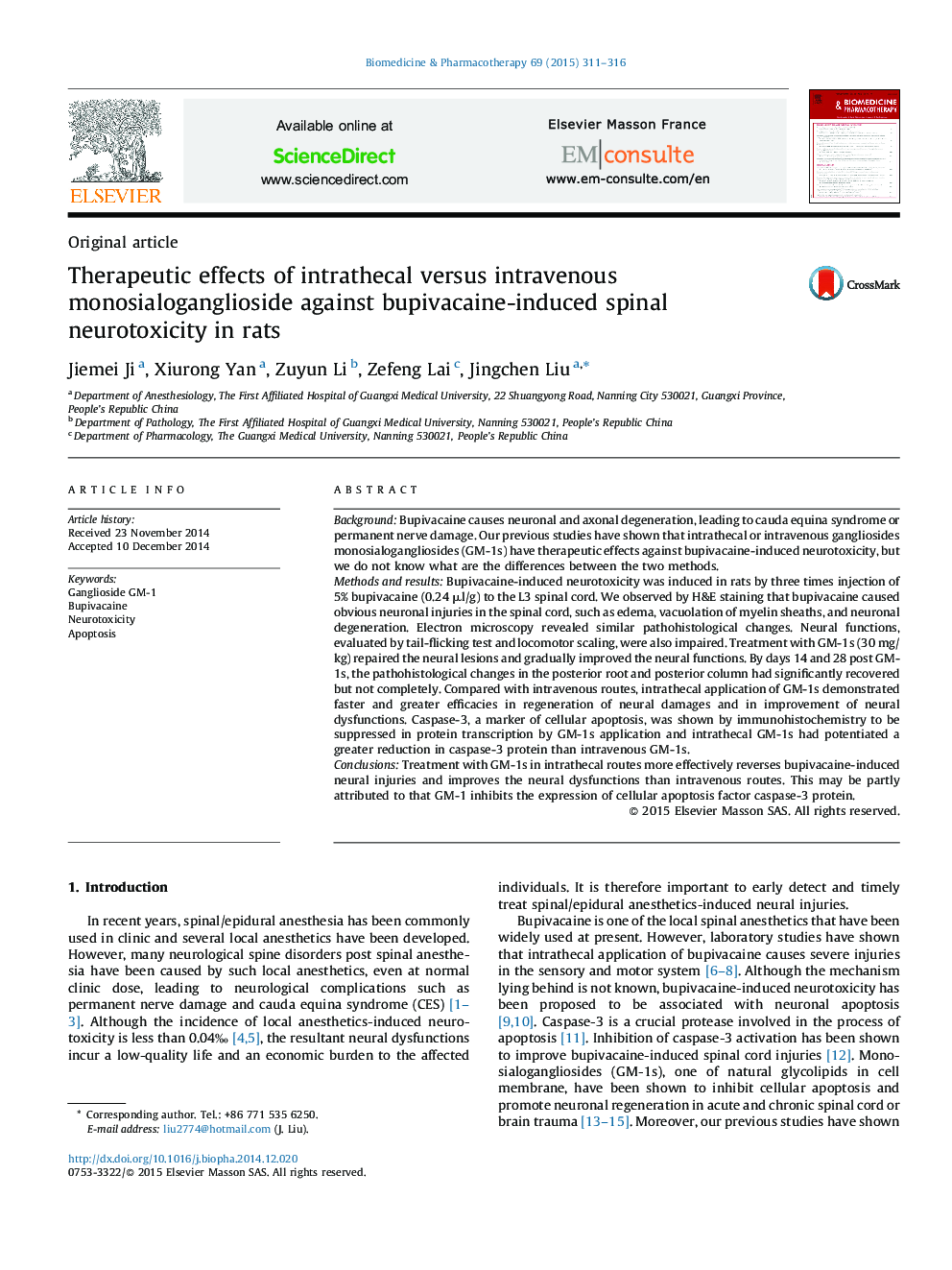| کد مقاله | کد نشریه | سال انتشار | مقاله انگلیسی | نسخه تمام متن |
|---|---|---|---|---|
| 2524153 | 1557973 | 2015 | 6 صفحه PDF | دانلود رایگان |

• Intrathecal GM-1 has more effect than intravenous GM-1 on local anesthetics neurotoxicity.
• Intrathecal GM-1 is superior to intravenous GM-1 on bupivacaine-induced neurotoxicity.
• The better effect of intrathecal GM-1 than intravenous GM-1 attributes to inhibit caspase-3.
• The better effectiveness of intrathecal GM-1 attributes to inhibit cellular apoptosis.
BackgroundBupivacaine causes neuronal and axonal degeneration, leading to cauda equina syndrome or permanent nerve damage. Our previous studies have shown that intrathecal or intravenous gangliosides monosialogangliosides (GM-1s) have therapeutic effects against bupivacaine-induced neurotoxicity, but we do not know what are the differences between the two methods.Methods and resultsBupivacaine-induced neurotoxicity was induced in rats by three times injection of 5% bupivacaine (0.24 μl/g) to the L3 spinal cord. We observed by H&E staining that bupivacaine caused obvious neuronal injuries in the spinal cord, such as edema, vacuolation of myelin sheaths, and neuronal degeneration. Electron microscopy revealed similar pathohistological changes. Neural functions, evaluated by tail-flicking test and locomotor scaling, were also impaired. Treatment with GM-1s (30 mg/kg) repaired the neural lesions and gradually improved the neural functions. By days 14 and 28 post GM-1s, the pathohistological changes in the posterior root and posterior column had significantly recovered but not completely. Compared with intravenous routes, intrathecal application of GM-1s demonstrated faster and greater efficacies in regeneration of neural damages and in improvement of neural dysfunctions. Caspase-3, a marker of cellular apoptosis, was shown by immunohistochemistry to be suppressed in protein transcription by GM-1s application and intrathecal GM-1s had potentiated a greater reduction in caspase-3 protein than intravenous GM-1s.ConclusionsTreatment with GM-1s in intrathecal routes more effectively reverses bupivacaine-induced neural injuries and improves the neural dysfunctions than intravenous routes. This may be partly attributed to that GM-1 inhibits the expression of cellular apoptosis factor caspase-3 protein.
Journal: Biomedicine & Pharmacotherapy - Volume 69, February 2015, Pages 311–316